News & Blogs
In this blog, we touch on diverse topics about Japanese food cultures, practices together with the culinary secret, TREHA®, and its important role in the Japanese food industry. We hope our blog helps you obtain in-depth knowledge of the secrets and science behind Japanese cuisine, shared from our kitchen, to yours.
“Sweetness”, “Sugar content”, “Brix” --- You may encounter these words when learning about sugar. While these words might seem similar and are important food production, they actually have different definitions. What are the differences?
Sweetness
Sweetness is a basic taste index determined by the sense of taste in humans. That is, intensity of sweet taste perceived when eating foods.
Sweetness is determined by comparing the taste of target ingredients with table sugar. Let’s see how to determine TREHA®’s sweetness. First, a 5% table sugar solution is compared with various concentrations of TREHA® solutions. The TREHA® solution which is perceived as equally as sweet as the 5% table sugar solution is determined (Step 1, Fig.1). From there, the sweetness of TREHA® can be calculated Step 1(Step 2, Fig. 2). Sweetness is shown as a relative value in comparison with table sugar as 100*.
* Sweetness of table sugar might be shown as ‘1’ academically.
How to determine sweetness of TREHA®
Step 1: Determine concentration of the TREHA solution which is equally sweet as 5% table sugar solution (Fig. 1)
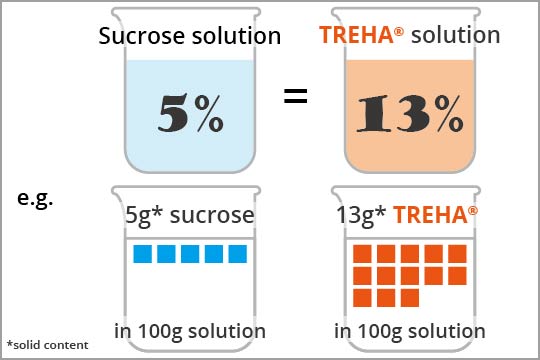
Step 2: Calculate sweetness (Fig. 2)
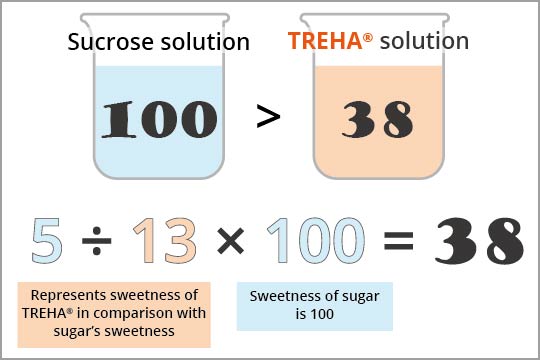
Sugar content
Sugar content is the concentration of dissolved sugar. It is calculated by the formulation as shown in Fig. 3.
How to determine sugar content (Fig. 3)
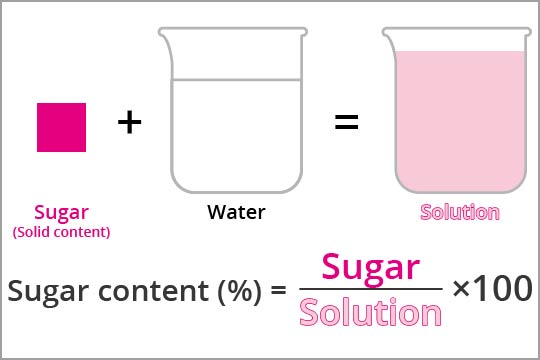
Example of table sugar (Fig. 4)
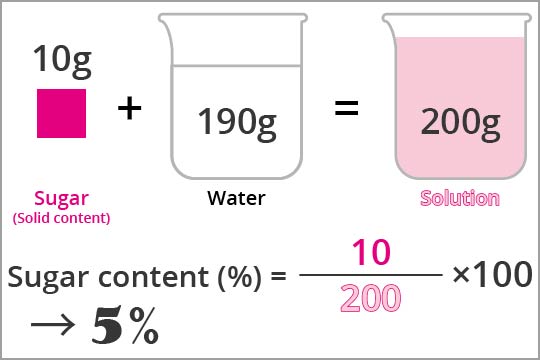
Let’s think about the sugar content of different types of ingredients. When making a solution with 10g of a sweetening ingredient like table sugar and 190g water, the table sugar solution has 5% sugar content, as shown in Fig. 4. However, with ingredients which contain moisture such as starch syrup, you will need to consider the moisture content of the ingredients as shown in Fig. 5. If you use starch syrup, it has 70% solid content, therefore 30% of it is water.
How to determine sugar content – 10g starch syrup and 190g water (Fig. 5)
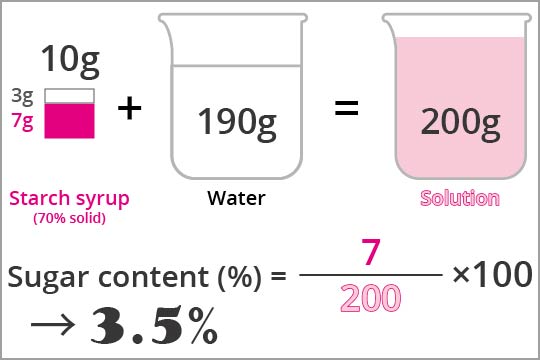
Sugar content is relevant to the physical property and shelf life of foods. In general, foods with high sugar content are stable, and foods with lower sugar content are unstable. This is because these are higher in moisture content.
Brix
Brix is one index for quality control in food production such as marmalade and wine, measured by the scale of a refractometer. The value is derived from the refraction index of a sucrose solution. 1°Brix means 1g sucrose in 100g of solution, thus Brix is considered almost the same as sugar content and water-soluble solid content.
It is important to know that foods containing water-soluble solids other than table sugar, such as salt, citric acid, amino acid and starch syrup, sometimes result in errors of measurement value. These ingredients affect refraction index when dissolved in water, and show subtly different Brix when comparing to table sugar. Ingredients like oil and fat are not measurable because these are not water-soluble.
As long as you understand what Brix is and what is measurable by a refractometer, measuring Brix is one of the easiest ways for checking food quality. Brix is not only helpful in the quality control of jams and jellies, but also in products made with gelatinized rice or flour.
While some items might have the same Brix, this does not mean they have the same composition. Let’s look at two types of samples that have 50 °Brix;
A) Starch 30: Sugar 20: Water 50
B) Starch 20: Sugar 30: Water 50
Both samples are measured as 50 °Brix after heating; however, B) is softer than A) because it consists of more sugar and less starch. B) has a longer shelf-life than A) for the same reason. When you develop a new food product, it is important to consider the physiology of food and know the proportion of sugar in soluble solids.
Scales of refractometer
10% solids – Ingredients other than sugar
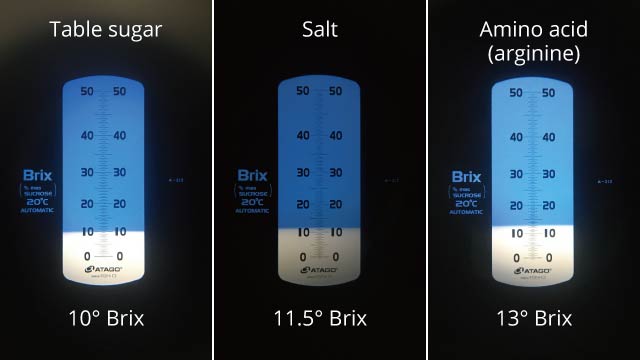
30% solids – Sugars which have different molecular weight
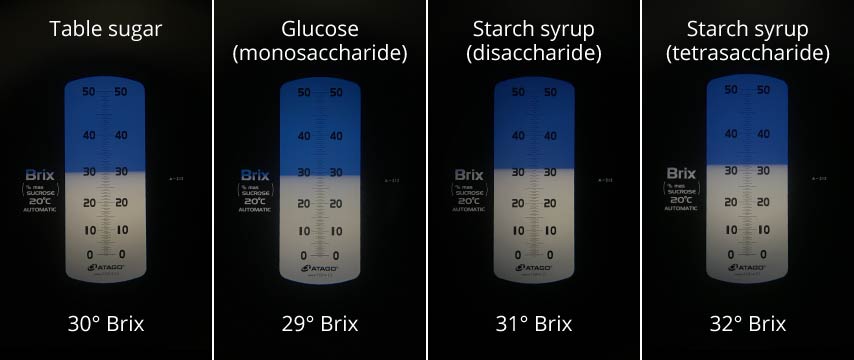
Thank you very much for reading our blog. Nagase Food Ingredients has the practical know-how for using sugar. Our experienced staff can help you to create and review your menus. Feel free to contact us.
Did you find this blog interesting?
Please share it with your friends in the food service industry.
We regularly update the blog about the food culture of Japan, where TREHA® was discovered for culinary applications.
Click here and send us a message to subscribe.
Or hit us up on Instagram @trehalose_sensei!

